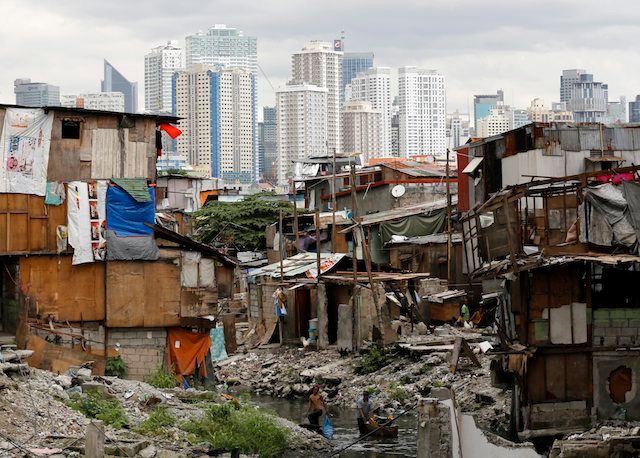SUMMARY
This is AI generated summarization, which may have errors. For context, always refer to the full article.

MANILA, Philippines – The government is fast-tracking its efforts to bring down by 2016 the poverty incidence in the country from 25% to at least 18%.
The strategy is to create employment opportunities, especially for the poor, in cities and municipalities with the potential to grow economically.
The government-led initiative is called the Accelerated and Sustainable Anti-Poverty Program (ASAPP), which will be implemented in the following areas:
- Cebu
- Pangasinan
- Camarines Sur
- Negros Occidental
- Leyte
- Davao del Sur
- Sulu
- Quezon
- Iloilo
- Zamboanga Del Sur
In a statement Friday, May 15, the Department of Social Welfare and Development (DSWD) cited 3 possible reasons why these areas are not reaching their full economic potential:
- Population with limited skills
- Limited expansion opportunities for businesses
- Huge in-migration
The department said the initiative will need the participation of local government units and the private sector, especially in providing business and job opportunities to “target households.”
But the 2016 target of 18% to 20% is still higher than the country’s 2015 Millennium Development Goals (MDG), which is to bring down by half the poverty rate to 16.6% from the 1991 poverty rate of 33.1%.
The country’s poverty incidence even rose in the first half of 2014, as revealed by the 2014 Annual Poverty Indicators Survey. (READ: Steep prices, Yolanda hike PH poverty incidence in H1 2014)
The survey, released by the Philippine Statistics Authority (PSA), showed poverty incidence among Filipinos rising to 25.8% in the first half of 2014, from 24.6% in 2013.
The PSA also reported a higher poverty incidence among Filipino families in the first half of 2014 – to 20% from 18.8% in 2013. (READ: Reducing poverty top priority until 2016 – NEDA chief)
Social Welfare Secretary Corazon Soliman said responding to poverty must be seen through the lens of human development, which entails expanding people’s choices and empowering them to access these choices.
“All of these are realized through employment and livelihood; education; health; and, asset reform or the equitable distribution of resources, housing, and food security,” Soliman added.
ASAPP is initiated by the National Economic Development Authority Board-Social Development Committee, and government’s Human Development and Poverty Reduction Cluster. – Rappler.com
Add a comment
How does this make you feel?
There are no comments yet. Add your comment to start the conversation.